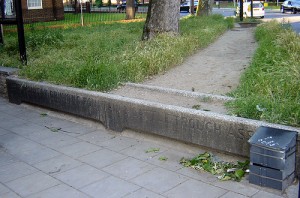Beyond the Topology of the Book
…the human perceptive apparatus [has] a potential to break with action and self-organisation: to see as such, without that point of view being folded around my organizing striving centre. It is precisely the image of bounded life that Deleuze sees as the illusion that has dominated philosophy and that is overcome in the radical connections of art.
– Claire Colebrook, Deleuze: A Guide for the Perplexed
 Books are passive, denying their rigid topologies only as their pages are turned to meet each other, face-to-face. Unlike writers and readers books do not converse, do not react to stimuli, do not alter over time. Unlike a group of readers there is always only one book, and although one book may be understood a thousand ways no single book can exhibit even one of those thousand to any new reader who happens by. The human apparatus is cajoled by the book-medium into an order which delimits the extent to which the human can interface its content.
Books are passive, denying their rigid topologies only as their pages are turned to meet each other, face-to-face. Unlike writers and readers books do not converse, do not react to stimuli, do not alter over time. Unlike a group of readers there is always only one book, and although one book may be understood a thousand ways no single book can exhibit even one of those thousand to any new reader who happens by. The human apparatus is cajoled by the book-medium into an order which delimits the extent to which the human can interface its content.
Our natural inclination is to perceive the act of writing as happening on fresh ground. The writer’s movement, of the pen or through the word-processor, gouges marks in the page that the reader re-traces.
This analogy, though, forgets the temporal dimension of the writing act. If a writer diverges from their original pathway, or backsteps in order to begin a new one, the printed page conceals their indecisive movements. At the level of the interface – the printed and bound book – only the writer’s final path is available for the reader to follow.
New mediums, such as web browsers and ebook readers, have the potential to store these divergent pathway in branching archives of potential. And for the first time in history the reader’s habits may also be gouged into the digital medium, such that a thousand readers may meet with a thousand writers, each able to marvel at the movements of the other.
Writing and reading have always happened against the illusion of permanent boundary provided by the scroll, the page, the book and the manuscript. If the medium had allowed it every pathway would have overlapped, in time, writing the acts of movement, or perception and incomprehension, into the surface of the bounded page. Like the Desire Lines made as we navigate our physical environments, exchange between text and interface should create Desire Lines through repetition and reflexion – lines that do not dictate our desires, but allow them to break free from the topologies the medium insists we traverse.
-
Bill
-
Bill